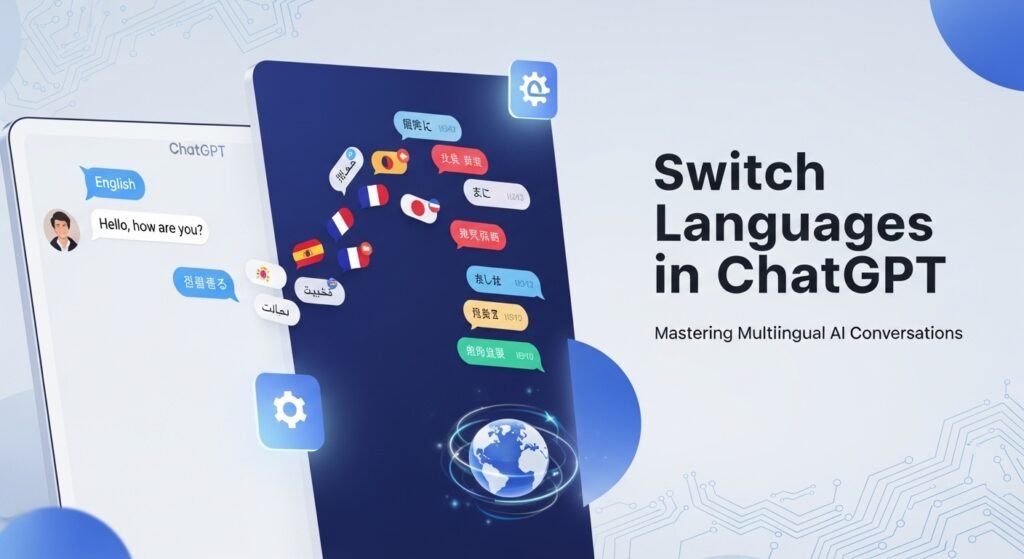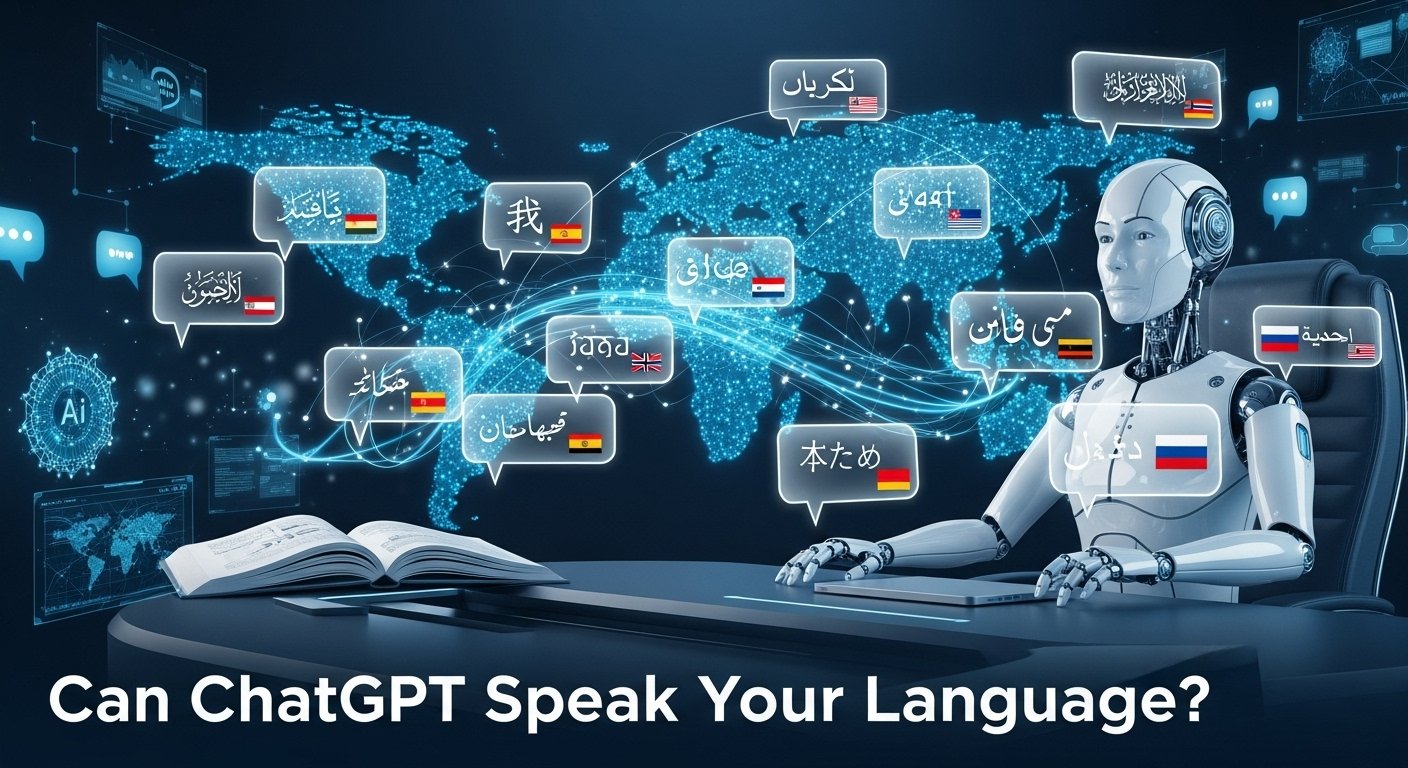ChatGPT, created by OpenAI, is a powerful AI tool that can answer questions, write essays, and even help with coding. One of its most impressive features is its ability to understand and respond in multiple languages. This makes it a valuable tool for people all over the world. But how many languages does ChatGPT support, how well does it perform in them, and what does this mean for global users? Let’s break it down.
How Many Languages Does ChatGPT Support?
According to OpenAI’s official help center, ChatGPT supports 63 languages as of August 2025. This includes major languages like English, Spanish, French, Chinese, and Arabic, as well as less common ones like Albanian, Amharic, Icelandic, and Swahili. The full list is available on OpenAI’s website, but it covers a wide range of linguistic diversity.
Some sources, like Joingenius and Exploding Topics, claim ChatGPT can handle over 95 languages, including regional dialects and even some programming languages. However, OpenAI has not officially confirmed this number. Until an official update is released, the confirmed count remains 63 languages.
| Source | Number of Languages Claimed | Date |
|---|---|---|
| OpenAI Help Center | 63 | August 2025 |
| Joingenius | Over 95 | January 2025 |
| Exploding Topics | Over 95 | July 2025 |
Which Languages Are Supported by ChatGPT?
ChatGPT’s language support spans a broad spectrum, catering to both widely spoken and niche languages. Here’s a sample of the languages it supports, based on OpenAI’s official list:
- Widely Spoken Languages: English, Spanish, French, German, Italian, Portuguese, Dutch, Russian, Chinese (Simplified and Traditional), Japanese, Korean, Arabic, Hindi, Bengali.
- Less Common Languages: Albanian, Amharic, Armenian, Bosnian, Bulgarian, Burmese, Catalan, Croatian, Czech, Danish, Estonian, Finnish, Georgian, Greek, Gujarati, Hungarian, Icelandic, Indonesian, Kannada, Kazakh, Latvian, Lithuanian, Macedonian, Malay, Malayalam, Marathi, Mongolian, Norwegian, Persian, Polish, Punjabi, Romanian, Serbian, Slovak, Slovenian, Somali, Swahili, Swedish, Tagalog, Tamil, Telugu, Thai, Turkish, Ukrainian, Urdu, Vietnamese.
This extensive list ensures that users from diverse linguistic backgrounds can interact with ChatGPT in their native or preferred language.
Can ChatGPT Generate Effective Ad Copy?
Performance in Non-English Languages
ChatGPT’s performance varies depending on the language. It excels in languages with abundant training data, such as English and Spanish, because these languages have a wealth of online content for the AI to learn from. For example, English responses are often highly accurate and fluent due to the vast amount of English text used in training.
For less common languages or regional dialects, performance may not be as strong. ChatGPT might struggle with nuances, slang, or idiomatic expressions in these languages. For instance, a study cited by Exploding Topics found that while ChatGPT could identify English slang terms like “trainers” for sneakers, it struggled to provide equivalent terms in Spanish, such as “zapatillas deportivas” or “championes.”
ChatGPT can also handle code-switching, where users mix languages in a single conversation, a common practice among bilingual speakers. For example, a user might start a sentence in English and finish it in Spanish. ChatGPT can generally follow along, but its accuracy may decrease if the languages are very different or if the context is unclear.
How to Switch Languages in ChatGPT

Switching languages in ChatGPT is simple and user-friendly. Here are the two main ways to do it:
- Set Your Browser Language: Change your browser’s language setting to your preferred language, and ChatGPT will automatically adjust. For example, setting your browser to French will prompt ChatGPT to respond in French. Instructions for changing browser language can be found in the OpenAI Help Center.
- Use a Language Command: Type the name of the language you want to use in your prompt. For example, typing “Habla español” will make ChatGPT respond in Spanish, or “Parlez français” will switch to French.
These methods make it easy for users to interact with ChatGPT in their desired language without navigating complex settings.
Implications for Global Users
ChatGPT’s multilingual capabilities have far-reaching implications for users worldwide. Here are some key applications:
- Education: Students can use ChatGPT to get help with homework, practice language skills, or learn new subjects in their native language. For example, a student in Japan can ask questions in Japanese, while a student in Brazil can use Portuguese.
- Business: Companies can use ChatGPT to communicate with international clients or provide customer support in multiple languages, reducing the need for human translators. This is particularly useful for multinational companies, as noted in Transphere.
- Travel: Travelers can use ChatGPT to translate signs, menus, or conversations in real-time, making it easier to navigate foreign countries.
- Content Creation: Writers and creators can produce content in various languages to reach a global audience, enhancing their reach and impact.
However, users should be aware that ChatGPT’s responses in less common languages may not always capture cultural nuances or context. It’s a good idea to double-check important translations or responses for accuracy.
Tips for Using ChatGPT in Different Languages
To get the most out of ChatGPT’s multilingual features, consider these practical tips:
- Set your browser language: This is the easiest way to start using ChatGPT in your preferred language from the outset.
- Switch languages on the fly: If you need to change languages mid-conversation, simply type the language name, like “Switch to Italian.”
- Keep prompts simple: For languages where ChatGPT’s performance may be weaker, use clear and straightforward prompts to improve response quality.
- Use it for language learning: If you’re learning a new language, ChatGPT can help you practice conversations or provide quick translations.
These tips can help users maximize the effectiveness of ChatGPT’s multilingual capabilities.
Future Developments
As AI technology advances, ChatGPT’s language support is likely to improve. The release of GPT-5, expected in 2025, is anticipated to enhance language understanding and generation, potentially expanding the number of supported languages and improving performance in non-English ones. According to Exploding Topics, GPT-5 is expected to offer better handling of complex and niche topics, which could include better support for less common languages.
Additionally, updates like GPT-4o, released in 2025, have improved ChatGPT’s ability to process and translate languages, particularly in voice mode, as noted in the OpenAI Help Center. However, as of August 2025, no official announcement has confirmed an expansion beyond the 63 languages listed.
Conclusion
ChatGPT supports 63 languages officially, with claims of handling over 95 languages, though these are not yet confirmed by OpenAI. It performs best in languages with abundant training data, like English and Spanish, and can manage code-switching in multilingual conversations. Switching languages is easy, either by setting your browser language or using a direct command. This makes ChatGPT a powerful tool for global communication, education, business, and more. As AI technology evolves, we can expect even better language support in the future, making ChatGPT an increasingly valuable resource for users worldwide.
